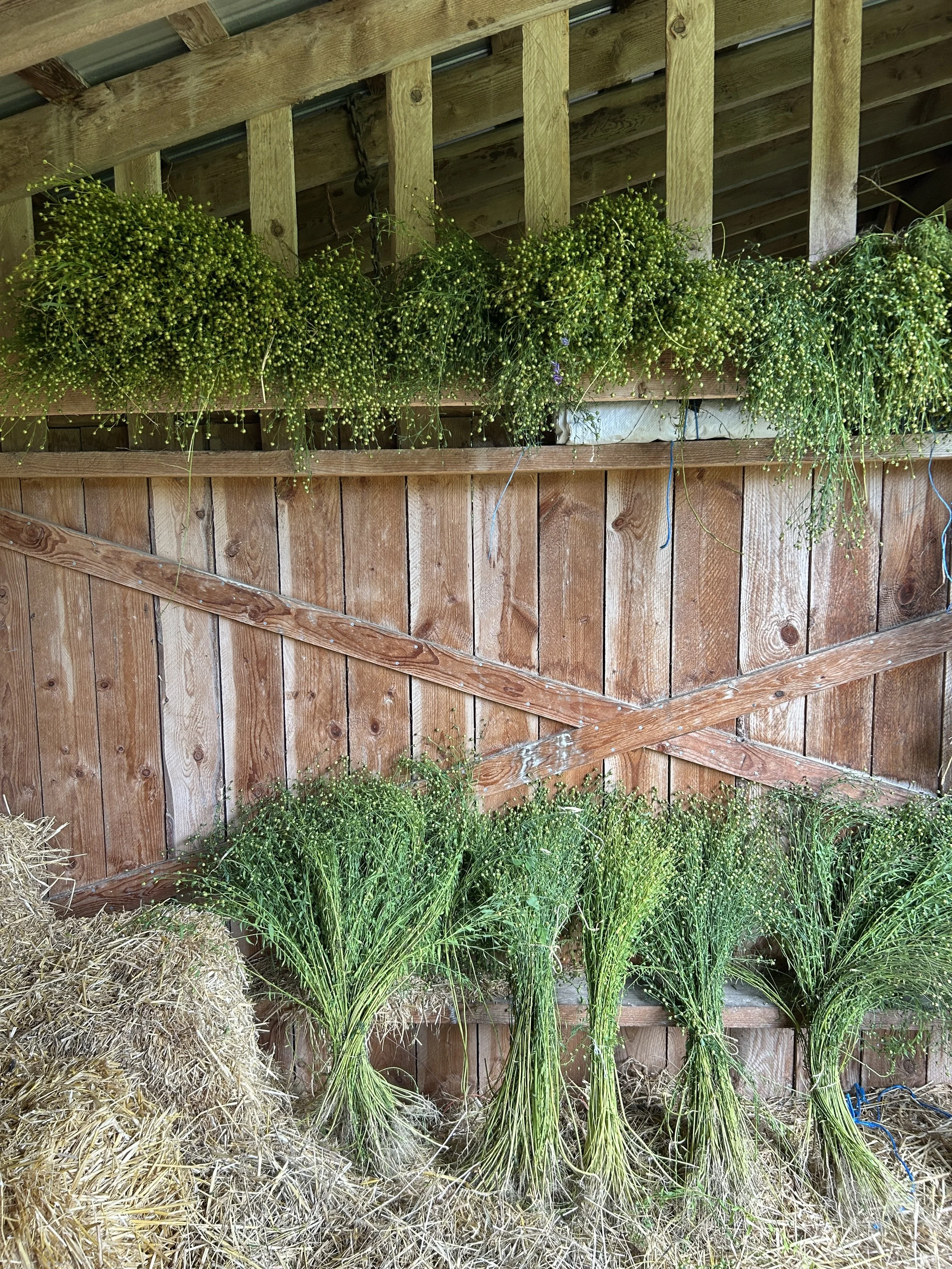
Flax to Linen
Layered Histories of Flax and Land
Flax has deep roots in the West Kootenay region. The Doukhobor communities who settled here in the early 20th century brought with them the knowledge of growing and processing flax into linen—a tradition that once sustained households and local economies.
At the same time, the confluence of the Columbia and Kootenay Rivers (kp’itl’els, now called Castlegar) has always been home to the Sinixt people. This land carries layered histories of presence, displacement, and resilience. The Christian family, of Sinixt lineage, was displaced from their home at kp’itl’els when Doukhobor settlers purchased the land in 1912, a history documented in Wilkinson & Sutherland’s From Our Side We Will Be Good Neighbour(s) to Them (read here).
To deepen understanding, we recommend White Grizzly Bear’s Legacy by Lawney Reyes, which shares lived stories of Sinixt memory, loss, and resilience.
Reviving a Crop Together
In 2024, the West Kootenay Fibreshed began exploring the viability of flax in our bioregion. A community plot was planted in Meadow Creek, and volunteers gathered to weed and later harvest the plants by hand, re-enacting skills that have been nearly forgotten but are ready to be revitalized in order to connect people with the cloth they wear and the stories of people and place that it holds.
After harvest, the flax was bundled, dried, and placed into retting experiments, the critical step where fibre begins to separate from the woody stalk.
“We are re-learning nearly forgotten skills - pulling, drying, retting - that connect us to both land, history and community.”
Danielle Soucie, Coordinator
Why Flax, Why Here?
In our mountainous valleys, where pastureland is limited, flax may offer a more viable fibre crop than wool as a primary focus. With less land required to grow significant yields, flax offers resilience and adaptability for our communities.
And flax has another gift: the seed, which is separated during processing, is part of our foodshed as a nutritious food and an oil crop.
Hands-On Learning
With recent grant support from Kootenay Savings Community Foundation and CBT, we are building full sets of flax processing tools - brakes, ripplers, scutching boards, and hackles - that will allow community members to learn and practice turning flax into linen during upcoming workshops. They will also become available through our Fibre Tool Library. Thanks to Scott Fettes, Meadow Creek resident, for building these tools for us!
Join us this winter as we connect fibre, food, and community, and explore what it means to build regenerative, circular economies from the soil up.



